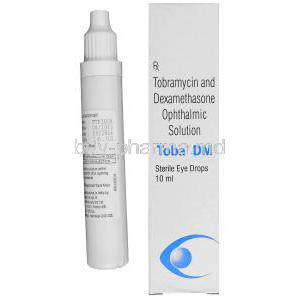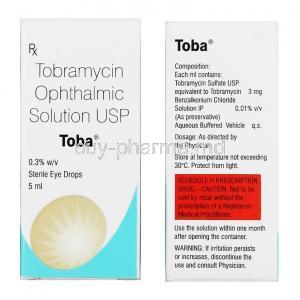Lomefloxacin Eye Drops
- Introduction
- Uses of Lomefloxacin Eye Drops
- Off-label Uses
- How Lomefloxacin Eye Drops Work
- Dosage and Administration
- Composition of Lomefloxacin Eye Drops
- Side Effects of Lomefloxacin Eye Drops
- Common Side Effects
- Interactions with Other Medications
- Warnings and Precautions
- Contraindications
- Careful Administration
- Administration to Special Populations
- Overdosage
- Storage and Handling Precautions
Introduction
Lomefloxacin, a type of antibiotic known as a quinolone has played a role in treating bacterial infections especially those affecting the eyes. Despite being commonly used in mainstream medicine this medications ability to kill bacteria makes it highly effective, against a wide range of microbial agents. Additionally considering that eye infections can quickly lead to vision problems it is essential to administer treatment promptly.
This article aims to provide an overview of the various uses of Lomefloxacin eye drops. These include approved applications, post surgical treatments and addressing eye related conditions beyond the scope of this discussion.
Uses of Lomefloxacin Eye Drops
Approved Uses: Treating Bacterial Eye Infections
Lomefloxacin eye drops are authorized for treating conjunctivitis and keratitis. This medication works by blocking the activity of DNA gyrase, which is crucial for the replication of bacterial DNA and their growth. Lomefloxacin has shown its effectiveness against both gram gram-negative bacteria found in the complex ocular environment, including:
- Staphylococcus aureus
- Escherichia coli
- Haemophilus influenza
It's important to follow the dosage recommended by healthcare professionals to ensure optimal therapeutic results. The pharmacokinetic properties of Lomefloxacin such, as its half life and ability to penetrate ocular tissues effectively also contribute to its efficacy.
Post-Surgical Applications
Although Lomefloxacin is commonly known for its effectiveness in treating infections, it also has applications in post-operative care. Specifically, after ocular surgeries such as cataract extraction or corrective procedures for refractive errors, there is a risk of opportunistic infections due to compromised ocular microbial flora.
Using Lomefloxacin eye drops during the operative phase serves two purposes:
- Firstly, it acts as a preventive measure against bacterial infiltration.
- Secondly, it helps minimize the response that occurs after surgery.
This is achieved by reducing cytokine release and limiting blood cell infiltration, thus preventing excessive inflammation. The decision to use Lomefloxacin in these cases is based on its spectrum antimicrobial properties and low likelihood of inducing resistance. Consequently, it is considered a choice by healthcare professionals.
Other Eye Conditions Treated with Lomefloxacin Eye Drops
Apart from its known uses, Lomefloxacin has also found its way into treating less common eye conditions. For example, it can be beneficial in cases of keratitis, a severe eye condition, as it effectively targets the bacteria causing it and helps prevent corneal perforation or blindness. Additionally, there are promising indications that Lomefloxacin can effectively treat dacryocystitis, an inflammation of the lacrimal sac.
It's important to note that using Lomefloxacin in these cases should be supported by culture and sensitivity tests to ensure effectiveness and prudence. Although research on Lomefloxacin's efficacy in these applications is still early, initial data suggests positive results.
Off-label Uses
Treating Viral or Allergic Conjunctivitis: A Controversial Approach
In the realm of using medications for purposes other than their intended use, there have been instances where Lomefloxacin eye drops were occasionally used to treat non-bacterial conjunctivitis, specifically viral or allergic types. While there isn't a body of clinical evidence supporting this approach, some medical professionals argue that it could be beneficial due to its broad spectrum nature.
In some cases, Lomefloxacin supposedly serves the following purposes:
- Providing relief from symptomatic discomfort
- Partially modulates immune responses
However, significant debate surrounds using a bactericidal agent for viral or allergic conditions—concerns about drug resistance and potential disruptions to the surface call for caution and careful consideration. The scarcity of peer-reviewed studies introduces an element of uncertainty in this practice.
Other Off-label Applications in Ophthalmology
Lomefloxacin eye drops for conditions other than their approved indications include treating various ocular issues like dry eye syndrome and meibomian gland dysfunction. In these cases, it is believed that the antimicrobial properties of the eye drops can help alleviate these conditions by addressing colonization that may not be clinically apparent. However, it's important to note that scientific evidence supports these uses. Doctors sometimes turn to off-label usage when dealing with cases where approved treatments have been unsuccessful. However, due to the lack of research in this area, healthcare professionals considering such interventions should carefully evaluate the potential benefits against any possible risks.
How Lomefloxacin Eye Drops Work
Mechanism of Action against Bacterial Cells
Lomefloxacin eye drops work effectively by stopping the growth of bacteria. They do this by targeting and inhibiting an enzyme called DNA gyrase, which is essential for replicating and repairing bacterial DNA. By preventing this process, lomefloxacin eye drops prevent the bacteria from multiplying, ultimately resulting in their death. This medication is known for its binding to bacterial DNA gyrase and ability to be easily absorbed into the eyes for optimal effectiveness.
Timeframe: When to Expect Results
Typically, symptoms of remission become apparent shortly after starting Lomefloxacin therapy. However, it is essential to complete the prescribed course of the drug even if symptoms improve earlier. This helps prevent the development of resistance and ensures effective treatment.
Efficacy Compared to Other Antibiotic Eye Drops
Compared to ophthalmic antibiotics such as tobramycin and ciprofloxacin, Lomefloxacin shows similar effectiveness in treating bacterial infections. However, its notable characteristic is its ability to target a range of bacteria and its lower likelihood of causing resistance. Its efficacy against Gram-positive and Gram-negative bacteria makes it versatile for ophthalmic antibiotic treatment.
Dosage and Administration
Standard Dosage for Common Eye Infections
The typical recommended amount of Lomefloxacin eye drops for treating eye infections is usually one drop applied to the affected eye(s) every 2–4 hours, lasting 7–14 days. However, it's important to note that this treatment plan can be adjusted based on the situation and the doctor's judgment.
Dosage Adjustments: When and Why
Modifications to the dosage schedule may be necessary in situations involving:
- The presence of medical conditions
- Symptoms that persist or worsen over time
- Unique and unpredictable responses from individual patients
When making these adjustments, it is crucial to carefully consider the patient's complete medical history and any other medications they may be taking.
Proper Techniques for Administering Eye Drops
It is essential to follow administration techniques to ensure the medication works effectively. The recommendations include tilting your head, gently pulling down your lower eyelid, and being careful not to let the dropper touch your eye or any other surfaces. After you've put in the eye, drop softly, close your eye, and press on the corner for about two minutes. This technique helps the medication stay in your eye longer, which improves its effectiveness.
Composition of Lomefloxacin Eye Drops
Active Ingredient: Lomefloxacin
The critical element of Lomefloxacin eye drops is the ingredient known as Lomefloxacin hydrochloride. This component, which belongs to the class of antibiotics, plays a crucial role in the ability of the drug to kill bacteria. It's not surprising that the concentration of this ingredient in the formulation impacts the effectiveness of the medication, which is why it undergoes strict standardization processes.
Additional Ingredients: Preservatives and Stabilizers
Apart from the component, these eye drops often contain extra ingredients like preservatives such as benzalkonium chloride and stabilizers like disodium edetate. These ingredients serve purposes;
- They extend the product's shelf life.
- Improve the stability of the formulation.
- Prevent microbial contamination after opening.
It's important to note that these additional ingredients are not just filler substances but play a role in ensuring the overall safety and practicality of the drug.
Generic vs. Brand Names: Are They Equivalent?
The comparison between branded medications often raises concerns about whether they can be used interchangeably. In general, generic versions are required to show that they are equivalent to the branded ones in terms of their effects. However, there may be differences in ingredients used, which could potentially affect factors such as:
- The stability of the formulation
- How well certain patients tolerate it
Therefore, while the active ingredient might be similar, there could still be variations that could affect a patient's experience or the outcomes of their treatment.
Side Effects of Lomefloxacin Eye Drops
Most Common Side Effects: Redness, Irritation, etc.
Serious Side Effects: What Requires Immediate Medical Attention
However, there are severe adverse effects that may require urgent medical attention. Some examples include:
- Experiencing severe allergic reactions like hives or anaphylaxis
- Intense pain in the eyes
- Disturbances in vision
If any of these symptoms occur it is crucial to stop taking the medication and seek immediate consultation, with a healthcare professional.
Common Side Effects
Mild Burning or Stinging
After using Lomefloxacin eye drops some people may experience a burning or stinging sensation. Don't worry this is a reaction and it usually goes away quickly.

Temporary Blurred Vision
Sometimes people have mentioned experiencing a blurriness in their vision as a potential side effect. It usually goes away on its own. Its recommended to avoid activities that require sharp eyesight, like operating machinery until the symptom clears up.

Eye Dryness
After using the drops some patients may experience a feeling of dryness, in their eyes. However this sensation is usually temporary. Can be relieved by using additional lubricating eye drops as long as there are no reasons to avoid doing so.
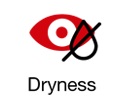
Interactions with Other Medications
Known Drug Interactions: Antacids, Multivitamins, etc.
It is important to be careful when using Lomefloxacin eye drops with other medications. There are interactions to be aware of, such as antacids that contain aluminum, calcium or magnesium as well as multivitamins that are fortified with zinc or iron. These substances can lower the effectiveness of Lomefloxacin by binding to metal ions. This can result in changes in how the medication works, including:
- Reduced efficacy
- Altered absorption, into the body.
Additionally it is crucial to approach the use of other antibiotics or corticosteroids with caution as this may either worsen or weaken the antimicrobial effects of Lomefloxacin.
Special Considerations for Patients on Multiple Medications
Patients who are taking medications require personalized treatment plans. In this group it is important to consider the following:
- The order in which medications are taken.
- Keeping track of any reactions.
- Regularly reviewing the medication list for conflicts.
This careful management is crucial to prevent interactions between drugs and to ensure the best possible outcomes, for patients treatment.
Warnings and Precautions
Important Precautions
Avoiding Prolonged Sun Exposure
Lomefloxacin can make your skin more sensitive to sunlight increasing the chance of experiencing skin reactions when exposed to rays. To minimize this risk it is recommended that patients avoid spending periods, in the sun and wear protective clothing when engaging in outdoor activities that cannot be avoided.
Not Suitable for Contact Lens Wearers During Treatment
It is advised not to wear contact lenses while using Lomefloxacin eye drops for treatment. The preservatives in the eye drop formula can stick to the lenses, which can:
- Compromise their integrity
- Potentially worsen eye irritation
This makes the drug less suitable, for patients who regularly wear contact lenses.
Contraindications
Hypersensitivity to Lomefloxacin or Quinolones
Lomefloxacin eye drops should not be used by patients who have a hypersensitivity or allergy to Lomefloxacin or any other quinolones. This hypersensitivity may result in symptoms such, as hives or severe allergic reactions.
Severe Ocular Viral Infections
Another important point to consider is that if someone has an ocular viral infection like acute herpetic keratitis using Lomefloxacin might make the condition worse and slow down the healing process.
Careful Administration
Patients with Liver or Kidney Disorders
Patients with liver or kidney problems who are prescribed Lomefloxacin eye drops require medical attention. These patients may have changes, in how their body processes. Eliminates the medication so the standard treatment protocol needs to be adjusted. It is important to monitor for any potential harmful effects and modify the dosage accordingly. Neglecting to consider these factors could lead to effective treatment outcomes or worsen existing conditions.
Patients with a History of Allergies
Patients who have a documented history of allergies to quinolones or other antibiotics need careful management. To ensure their safety it is crucial to:
- Conduct a patient interview to gather relevant medical history.
- Consider allergy testing when possible.
- Monitor these patients closely for any reactions.
Failing to take these precautions could potentially trigger an allergic response, which may result in medical emergencies, like anaphylaxis.
Administration to Special Populations
Administration to Elderly
Special Dosage Considerations
The older population frequently experiences changes in how drugsre processed and how they work due, to the natural aging process. As a result it may be necessary to adjust the dosage and monitor the effectiveness and safety of medications often. This is particularly important when kidney function is impaired, which commonly occurs with advancing age.

Monitoring for Adverse Reactions
Additionally it is crucial to remain vigilant and carefully observe patients for any indications of negative reactions. These could manifest as discomfort in the eyes or symptoms that affect the body. Given that older individuals take multiple medications simultaneously it becomes even more important to thoroughly evaluate potential interactions, between drugs.
Administration to Pregnant Women and Nursing Mothers
Is It Safe During Pregnancy?
The available information regarding the safety of using Lomefloxacin eye drops during pregnancy is uncertain. Lacks clarity. Although certain studies conducted on animals have not shown any effects, on fetal development the absence of well regulated studies involving humans has categorized it as a drug falling under Category C. Therefore it is advisable to limit its usage to situations where the expected advantages outweigh any risks.

Lactation and Nursing Considerations
There is information available about the transfer of Lomefloxacin into breast milk for breastfeeding mothers. However considering the possibility of effects, on nursing infants it is important to carefully weigh the risks and benefits. Some possible options to consider include:
- Temporarily stopping breastfeeding
- Exploring antimicrobial medications
Administration to Children
Age Restrictions and Considerations
When it comes to giving Lomefloxacin eye drops to children we need to consider their needs. It's important to examine the anatomical and physiological characteristics of the eyes in pediatric patients. Generally it is not recommended to use this medication for children under 12 years old because there isn't data on its safety and effectiveness specifically for them. Additionally there is a risk of adverse effects, on their development.

Pediatric Dosage Guidelines
If there is an definite need to use Lomefloxacin in pediatric cases it is crucial to carefully plan the dosage. The goal should be to use the effective dose while closely monitoring for any adverse effects on both the body and eyes. Failing to adhere to these principles may result in less, than therapeutic results and unwanted side effects.
Overdosage
Symptoms of Overdose
An overdose of Lomefloxacin eye drops is a urgent situation. It can cause symptoms both in the eyes and, throughout the body. Some common signs to watch out for are:
- Eye irritation
- Intense redness
- Digestive discomfort or other systemic effects
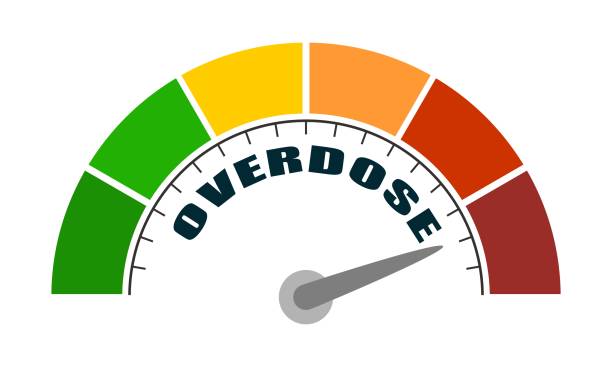
Immediate Steps for Management
If you notice any signs of an overdose it is important to take steps to provide relief. Here's what you can do:
- Rinse your eyes thoroughly with plenty of water.
- Stop taking the medication Remember it's crucial to act quickly when dealing with overdose symptoms.
When to Seek Emergency Medical Care
If the symptoms continue or worsen it is crucial to seek advice promptly. Delaying intervention could make the patients condition worse or even lead to damage, to the eyes.
Storage and Handling Precautions
Optimal Storage Conditions
It is important to store Lomefloxacin eye drops to maintain their effectiveness. Keep the vials in an dark place ideally at a temperature, between 15-30°C (59 86°F).
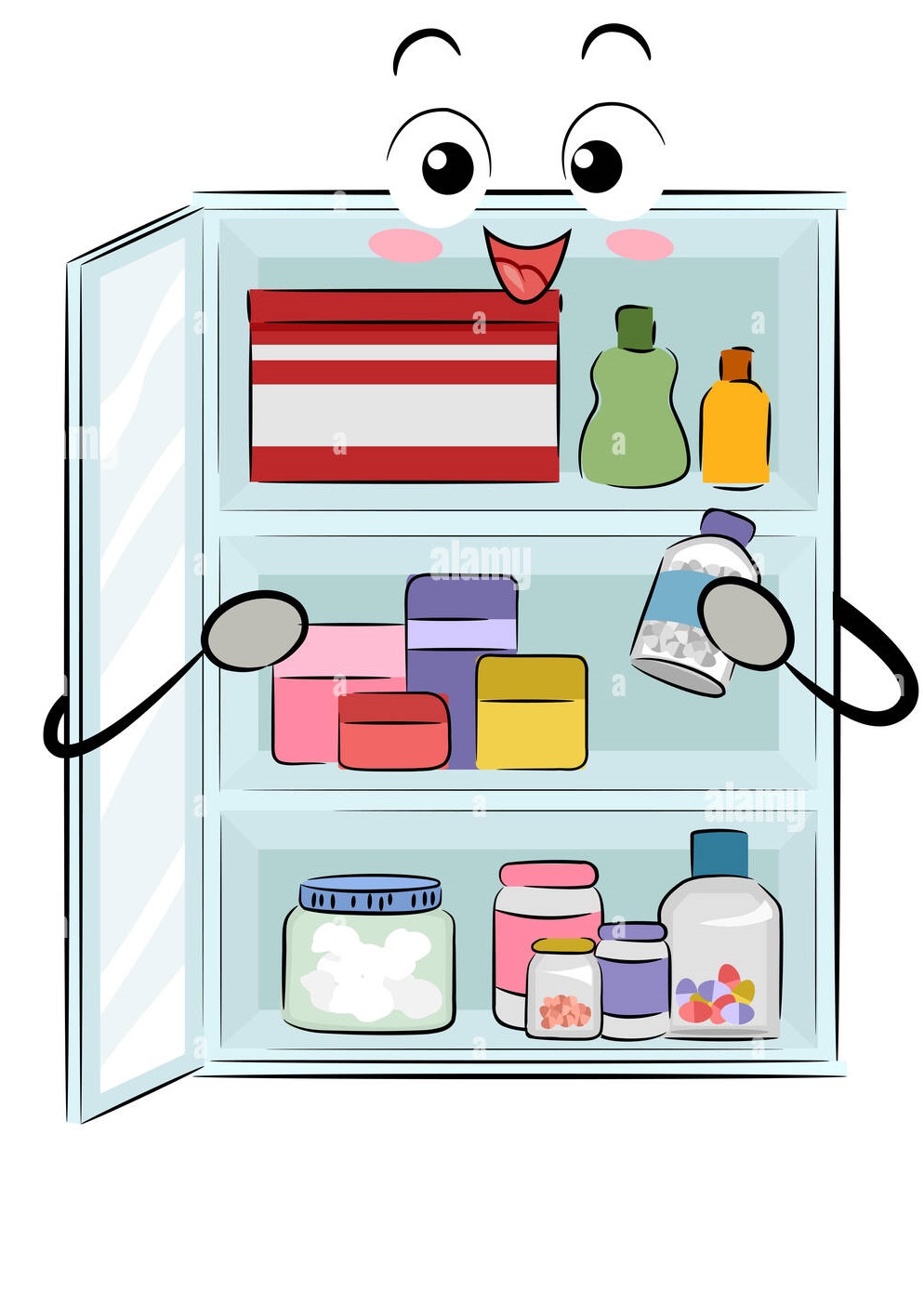
Shelf Life
Lomefloxacin eye drops usually have a shelf life of 24 months. However it is important to use them within one month after opening the vial to ensure their effectiveness and safety.
What to Do with Expired Eye Drops
Using eye drops that have expired is not recommended. It is important to dispose of them according to the local waste disposal regulations. Using expired eye drops may reduce their effectiveness. Increase the risk of contamination.







